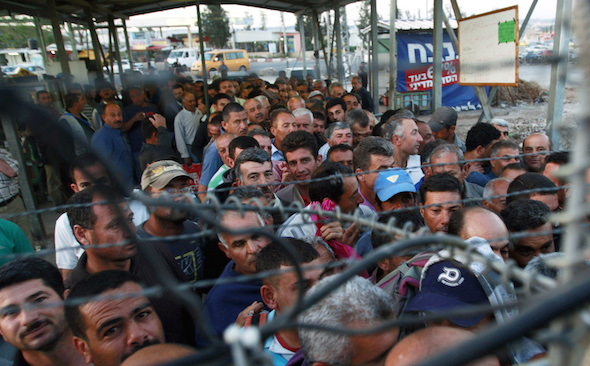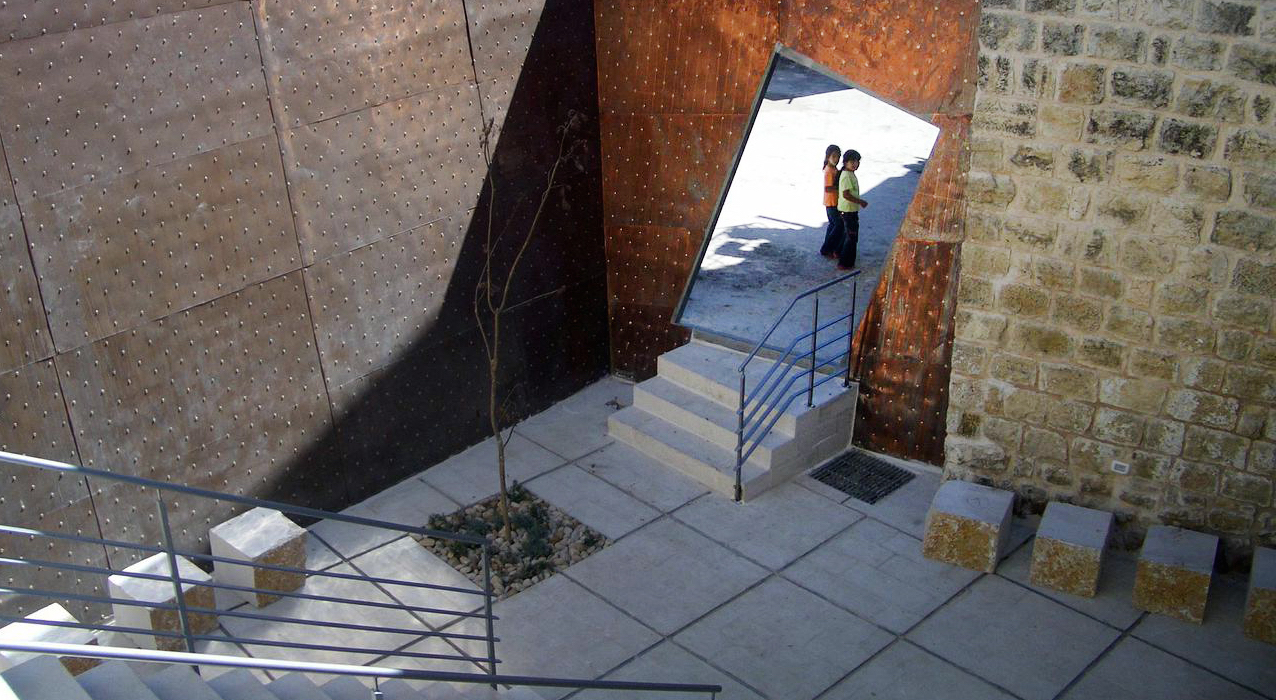By Sandy Tolan
Beholden: Prodded by Millennials, Bernie Sanders Reboots the Conversation on Israel and Palestine
by Sandy Tolan
By nearly every measure—income inequality, financial corruption, race relations, the environment, foreign policy—Sanders is changing the conversation in the United States, hauling out unpopular items long ago kicked under the couch. Nowhere is this more surprising than on the question of Palestine and Israel.
Beholden: A Kiss Was Just A Kiss: Hillary Clinton’s March to the Hard Right on Israel
Israel/Palestine: What Would a President #Trump Do?
In the first in a special series on the presidential candidates on Palestine/Israel on Facebook, Sandy Tolan asks, “What Would a President #Trump Do?”
How bad has it gotten when arguably the most “progressive” presidential candidate on Palestine/Israel – in either party – is the nativist who’d ban Muslim visitors to the U.S., close American mosques, enter U.S. Muslims in a national database, and enshrine waterboarding as a national foreign policy pastime? Yep; pretty bad.
We blew it after 9/11. We’re blowing it again after Paris
We had global goodwill after 9/11 and squandered it in Iraq. Rage and vengeance is the wrong strategy post-Paris, too
BY SANDY TOLAN
On Sept. 14, 2001, 800 million Europeans in 43 countries observed three minutes of silence for the victims of 9/11. From Europe and around the world came pleas that the U.S. not squander this global goodwill. I recall the words of my brother John, a French-American Medieval scholar and co-author of “Europe and Islam: Fifteen Centuries of History,” who wrote then from France: “This massive unity of public opinion and political will provides the United States with a tremendous opportunity and risk: the chance to capitalize on this good will and the danger of taking action that will splinter the forces that stand with us now.”
Our media’s context-free zone: “There is much more alarm when Israelis rather than Palestinians are dying”
All violence and death is horrific. But the media’s doing a poor job of explaining the history in East Jerusalem
The “Knife Intifada” Context: The Incredible Shrinking Palestine
These five maps tell their own history of the Israeli-Palestinian Struggle. From “Children of the Stone” (Bloomsbury, 2015).
A popular history of the birth of Israel — what we might call the Leon Uris “Exodus” history — describes a nation rising out of the ashes of the Holocaust, as hundreds of thousands of Jewish survivors joined fellow Zionists to reclaim the promised land from its empty, barren past. “Today the Jewish people are again at a period of Genesis,” Prime Minister David Ben-Gurion declared. “A waste land must be made fertile and the exiles gathered in.” Many of the emigrants had been inspired by the Zionist slogan, “People without land go to a land without people.”
Of course, there were people already there, ignored by Uris’s powerful but terribly incomplete narrative. By 1936, about a million mostly rural Palestinian Arabs lived in historic Palestine, annually harvesting hundreds of thousands of tons of barley, wheat, tomatoes, cucumbers, grapes, figs, olives, and citrus. And their history — indeed the history of the Palestinian-Israeli tragedy — can be told in part by a series of maps (from Children of the Stone).
Tolan on ‘hope and dignity’ amidst Israel’s military occupation
In recent days, clashes and demonstrations have erupted across Palestine as Israeli forces have injured more than 400 Palestinians, according to the YWCA in Jerusalem, attacking more than a dozen ambulances, shooting some 40 with live ammunition, killing four teenagers in barely 24 hours, and shooting a woman dead in cold blood at a checkpoint. An “endless state of emergency,” the YWCA declared.

In the Bookroom Q&A: Sandy Tolan, Author of Children of the Stone
BY BRENNA SMEALL
How did you develop your original interest in the Israeli-Palestinian conflict?
Throughout my career, I have been drawn to international stories about the intersection of land, natural resources, indigenous and cultural identity. I had always been interested in covering such issues in Israel and Palestine. Like many Americans, Jew and Gentile alike, I was raised with the story of the heroic birth of Israel out of the ashes of the Holocaust but had come to understand that there was another people’s story in the Holy Land, too. After marrying a Palestinian journalist whom I met on a journalism fellowship at Harvard (we were married for eight years), I began traveling to the region extensively to explore the different narratives of history, identity, war, and peace, throughout Israel, the West Bank, and Gaza. This resulted first in a series of reports for National Public Radio (NPR) about water in the Holy Land, and then my 1996 book, The Lemon Tree: An Arab, a Jew, and the Heart of the Middle East.
Witness to a Catastrophe: Sandy Tolan on ‘Night in Gaza’ and ‘The 51 Day War’
Tolan’s ‘Children of the Stone’ paints an honest devastating portrait of life under occupation
The Journal of Music (Ireland): A Musical Intifada
 In ‘Children of the Stone’, a new book by Sandy Tolan, two drastically different visions of music’s potential collide, writes Raymond Deane
In ‘Children of the Stone’, a new book by Sandy Tolan, two drastically different visions of music’s potential collide, writes Raymond Deane
Readers of this magisterial book can make up their own minds, as Tolan presents every side of the argument sympathetically. Children of the Stone is both novelistic and scholarly… Those seeking a human interest story will find the book inspiring; simultaneously and effortlessly they will absorb a crash course in Israeli/Palestinian history, a history that involves all of us because of our governments’ failure to act decisively in the interests of peace and justice.
Click here to read the full review in the internationally-renowned, Ireland-based music magazine, The Journal of Music.
Divine inspiration or pure politics: What’s behind Charles Schumer’s opposition to Obama’s Iran deal?
 Is the self-described guardian of Israel risking his leadership because he believes God speaks through him?
Is the self-described guardian of Israel risking his leadership because he believes God speaks through him?
BY SANDY TOLAN
Throughout history, kings, sultans, popes and commanders in chief have claimed to hear the voice of God in matters of war and peace.
Ramzi Aburedwan and Sandy Tolan on “Performance Today” with Fred Child
The power of music
As a boy, Ramzi Aburedwan threw stones at Israeli soldiers. Then he learned to play the viola, and these days, he fights for peace — with music. On the Aug. 8 episode of “Performance Today,” journalist Sandy Tolan and Palestinian music teacher Ramzi Aburedwan join host Fred Child to discuss the power of music and Tolan’s new book, “Children of the Stone.” Click here to listen now.
LA Times Op-Ed: Israeli policies sparked the deadly Duma fire
In Palestine, A Child Of Violence Becomes A Music Educator
NPR “Weekend Edition”
July 12, 2015
Sandy Tolan and Ramzi Aburedwan in conversation with “Weekend Edition” NPR host Lynn Neary on Children of the Stone.
Israel and Palestine: Not So Separate, Deeply Unequal
This might have been some long-forgotten incident from the Jim Crow American South, but it happened this spring, near the West Bank municipality of Yatta, when Israeli soldiers came to the village pool and ordered the Palestinian bathers out of the water. The April 2015 incident, documented by the respected Israeli human rights group, B’tselem, was all the more striking in that it occurred in “Area A,” the 18 percent of the West Bank that is supposedly sovereign Palestinian land. (Area C, under full Israeli military control, takes up 60 percent; Area B, joint Israel-Palestinian control, the remaining 22 percent.)
BBC Radio 3: “Music Matters” features Sandy Tolan on the ‘remarkable’ story behind “Children of the Stone: The Power of Music in a Hard Land”
 Ramzi Hussein Aburedwan, a child from a Palestinian refugee camp, got an education abroad, mastered an instrument and dreamt of something much bigger than himself. The dream was to build a music school to transform the lives of thousands of children, as Ramzi’s life was transformed, through music. During this journey Daniel Barenboim, the eminent Israeli conductor, invited Ramzi to join his West Eastern Divan Orchestra, which he then left due to the tensions sweeping the region, to continue following his dream.
Ramzi Hussein Aburedwan, a child from a Palestinian refugee camp, got an education abroad, mastered an instrument and dreamt of something much bigger than himself. The dream was to build a music school to transform the lives of thousands of children, as Ramzi’s life was transformed, through music. During this journey Daniel Barenboim, the eminent Israeli conductor, invited Ramzi to join his West Eastern Divan Orchestra, which he then left due to the tensions sweeping the region, to continue following his dream.
Petroc Trelawny talks to the Middle East journalist Sandy Tolan who has documented this remarkable story in his new book “Children of the Stone – The Power of Music in a Hard Land.”
Summer East Coast Book Tour & Concert Dates – Featuring Ramzi Aburedwan & Dal’ouna Ensemble
|
JUL
07
|
|
|
JUL
08
|
|
|
JUL
11
|
Ramzi Aburedwan & Dal’ouna Ensemble with Lena Seikaly and Sandy Tolan
Journey through a fractured landscapePraise for ‘Children of the Stone’ in Huffington Post Books, the Seattle Times & St. Louis Dispatch“Sandy Tolan knows Palestinian life. His first book, The Lemon Tree: An Arab, A Jew and the Heart of the Middle East (2006) was followed up by his popular blog, Ramallah Café: Facts on the Ground in the Middle East. Now he gives us Children of the Stone where we hear more about some of the people we’ve met at his café,” writes Huffington Post Books’ Nancy Graham Holm. The Evil that Dare Not Speak Its Name: Israel’s ApartheidChildren of the Stone in the media, plus book tour dates
Want to read the latest excerpt from Children of the Stone before anyone else?Want to read the next excerpt from Sandy Tolan’s new book? Share next week’s Grace Notes with your friends and you can read it right now! (more…) Grace Notes: Week 2Read all of the excerpts from the second week of Grace Notes. (more…) |















